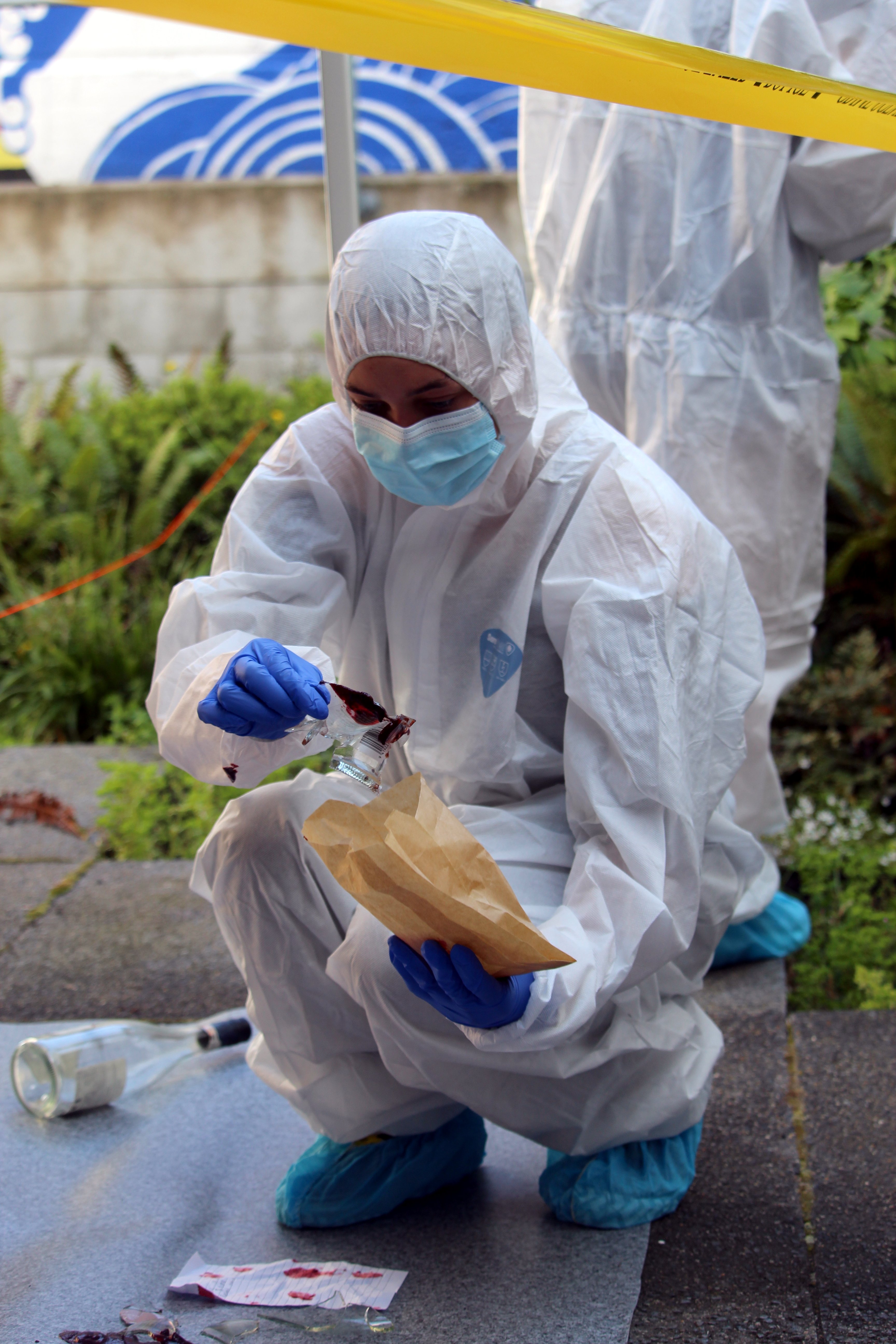
Empty wine bottles and chocolate litter the scene, and a bloody knife and footprints suggest signs of a struggle.
Could someone in the wealthy family be a suspect?
What really happened in the grounds of the richly decorated home.
No, it is not a tragic murder, or a scene from American mystery film Knives Out.
Instead, it is a carefully constructed mock crime scene at the University of Otago Faculty of Dentistry courtyard.
Students taking part in the Forensic Biology Summer School paper were given the challenge of collecting and cataloguing crime scene evidence.
Lecturer and forensic anthropologist Dr Angela Clark is the course convener for the summer school and devised the programme based on real-life examples.
"That is why I involve the police and I use my own casework experience to inform my teaching."
She developed the realistic crime scenario after travelling the country to interview forensic practitioners.
"What we really want to do is actually teach them how to think like a forensic scientist and that’s essentially critical thinking."
Students were divided into teams and were given different tasks including preparing DNA swabs and evidence labels, writing up the evidence recovery log, and managing the collection of items, from broken glass to bloody footprints.

"They are the only people in the group allowed to enter the crime scene. They are tasked with collecting the evidence but they are not the decision-makers," Dr Clark said.
"They can communicate with their managers about what they see but it is ultimately the manager that tells the SOCO what to do and what order to do it." The students were taught to collect evidence starting from the smallest to the biggest, and to consider what could be the most influential or critical piece of evidence that could provide the most information about what happened, Dr Clark said.
Police forensic photographer Seaton McGuigan gave advice about how to record a crime scene in a thorough way.

Making sure evidence had context was a key part of ensuring there was a good photographic story for a crime scene, he said.
After collection at the scene, students would continue working in the lab, developing an understanding of how evidence was examined.
The Forensic Biology Summer School continues until February 24.














